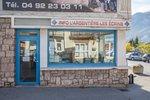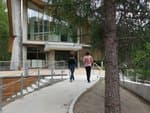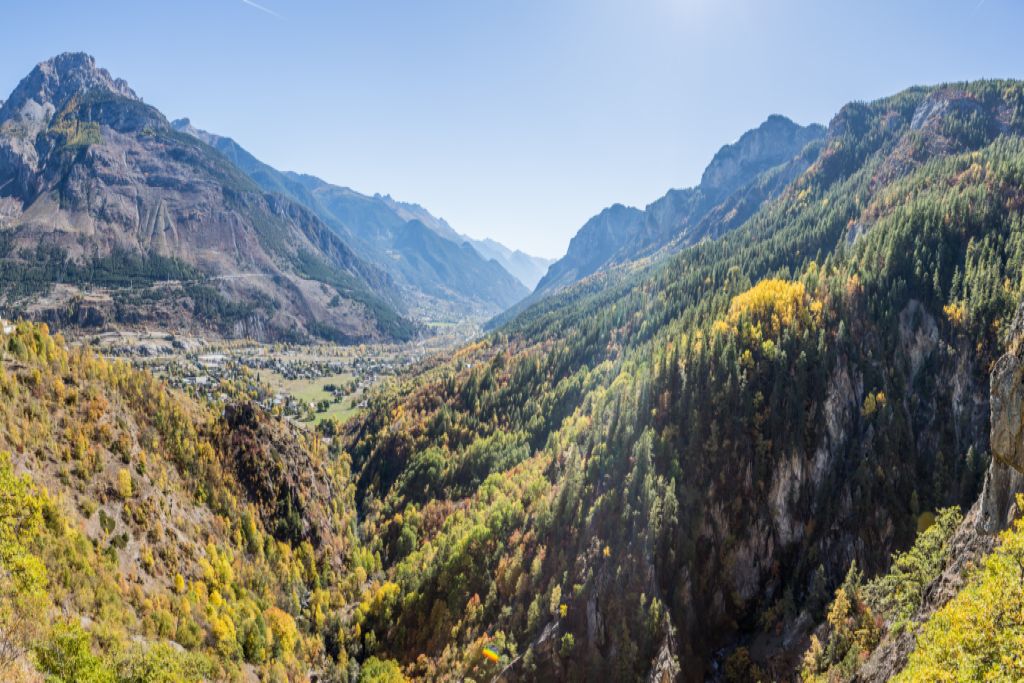
The Sentier des Mineurs - The Miners' path
Very often, we only think of the newest part of the town of L'Argentière-La Bessée. But roaming the old hamlets of L'Argentière makes for a fascinating exploration, as does the silver mining museum ("Musée des Mines d'Argent"). Dropping back down through a cool, refreshing forest is a pleasant complement to this outing.
Description
From the train station in L'Argentière-les Écrins, head towards the silver mining museum ("Musée des Mines d'Argent")
- Just after the tunnel under the railway line, take the narrow road on the right, and then left onto a track which comes to the bottom of a narrow lane, which you climb up via some steps to an intersection. Carry on uphill until you come to the church. Cross the Fournel road when you come to the school.
- Just to the right of the school, take a narrow road.. After 50 metres, carry straight on along a paved lane which turns into a grassy track running along a canal side.
- Take the narrow road on the right, going uphill, and go left just after the bend. Further on, continue right towards the Fournel mines ("Mines du Fournel"). Shortly after this, head right again to reach the access road leading to the Fournel. Follow this road left for a short stretch, and then take a path on the left, on a hairpin. Then follow signs for « Les mines ».
- Cross the Fournel road again to take the path opposite which passes in front of a house, then right.
- Continue uphill between the houses in the hamlet of La Blachière and, in a farmyard, go left in front of the farm sheds. Carry on towards an oratory and continue along the hillside until you come back to the Fournel road. Follow this upstream to cross the bridge. Immediately after this, take a track on the left which runs back down to L'Argentière along the right-hand bank.
- At the bottom of the path, cross the bridge on the left and follow the main road down towards the Musée des Mines, which brings you back to the train station.
- Departure : SNCF train station, L’Argentière-La Bessée
- Arrival : SNCF train station, L’Argentière-La Bessée
- Towns crossed : L'Argentière-la-Bessée
Altimetric profile
Recommandations
Take care in the hamlet of La Blachière, when going through a farmyard where dogs are often tied up (be vigilant if you have a dog).
Check weather conditions before setting off.
Rescue services contact details: Secours Montagne (Mountain Rescue): +33 (0)4 92 22 22 22 or 112
Show consideration for the work of farmers, livestock keepers and owners
Close all gates behind you
Take your litter home
Do not take shortcuts across pastureland
Information desks
23 Avenue de la République, 05120 L'Argentière-La Bessée
Vallouise Park house
, 05290 Vallouise
Information, documentation, models, exhibitions, screenings, product sales and works of the Park. Guided tours for school, reservation required. The new Park House opened in Vallouise since June 1, and offers visitors an interactive permanent exhibition inviting to explore the area and its heritage. A temporary exhibition space will allow a renewed offer. Finally, the device is completed by an audiovisual room to organize screenings and conferences Free admission. All animations of the Park are free unless otherwise stated.
Access and parking
16 km from Briançon, take the N94.
Sensitive areas
Short-toed snake eagle
- Impacted practices:
- Aerial,
- Sensitivity periods:
- MarAprMayJunJulAugSep
- Contact:
- Parc National des Écrins
Julien Charron
julien.charron@ecrins-parcnational.fr
Short-toed snake eagle
- Impacted practices:
- Aerial,
- Sensitivity periods:
- MarAprMayJunJulAugSep
- Contact:
- Parc National des Écrins
Julien Charron
julien.charron@ecrins-parcnational.fr
14 points of interest
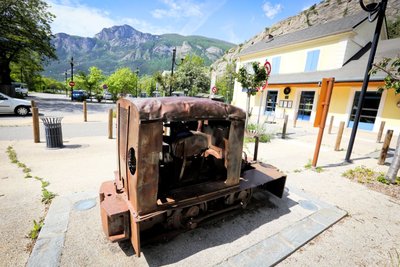
Le locotracteur - Jan Novak Photography  History
HistoryThe light rail tractor
A locomotive? No, its little cousin, the light rail tractor. This replaced manually pushed carts and horse-drawn vehicles. Less powerful than a locomotive, it travelled along narrow-gauge tracks which could be laid on different types of terrain. An information panel also described the role of this vehicle during the Great War.
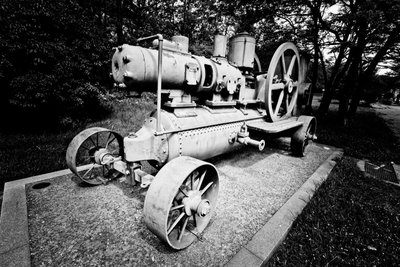
Le compresseur mobile - Jan Novak Photography  History
HistoryThe mobile compressor
In the mines, compressed air is used to remove dust and to create power for the drills. The mobile compressor holds compressed air in a resistant tank. This is brought to a high pressure via a pump (the compressor). The compressed air is then distributed to the mine machinery through a conduit system.
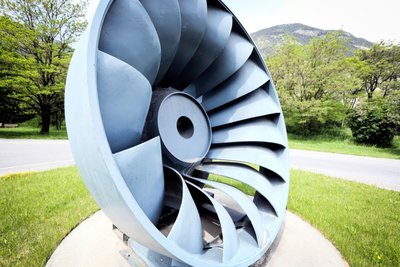
La turbine Francis - Jan Novak Photography  History
HistoryThe Francis turbine
The American James Francis developed the Francis turbine between 1849 and 1855. It is a “àreaction” turbine suitable for medium-sized waterfalls (with a water head of between 15 and 500 metres). The water enters the turbine and then circulates between the turbine blades, which are fixed, while the inner wheel is mobile. The pressure at the wheel intake is greater than the pressure at the outlet.
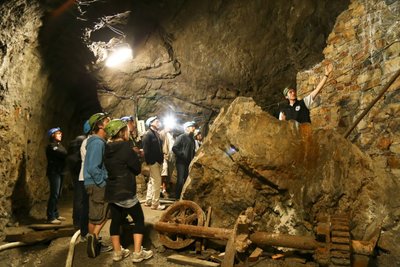
Les mines d'argent - Thibault Blais Photographie  Vernacular heritage
Vernacular heritageThe silver mines
The path passes close to the silver mines which gave L'Argentière its name (argent meaning "silver"). They were first worked in the early Medieval period and later abandoned before exploitation resumed again in the nineteenth century. They were finally closed in 1908. Since 1992, the site has been the subject of archaeological excavations, with major work to clear materials carried by the Fournel when in flood. They can be visited with a guide (by appointment), leaving the visitor in awe: how much ingenuity has been involved in extracting the silver-bearing galena!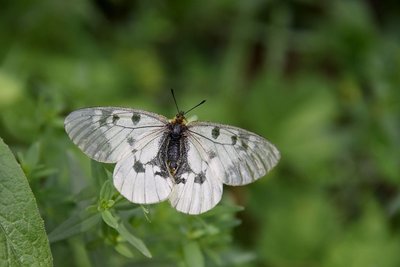
Le semi-apollon - Mireille Coulon - Parc national des Écrins  Flora
FloraThe Apollo
This large white butterfly decorated with black marks and red dots, is common in warm areas where stonecrops and houseleeks grow, as these are host plants for its caterpillars. It remains common in the Alps, but is much rarer elsewhere. In fact, it is a protected species. Its movement to higher altitudes has been observed, in line with climate warming, because its eggs, which it lays on plants in summer, need a certain number of days of freezing temperatures in winter in order to hatch.
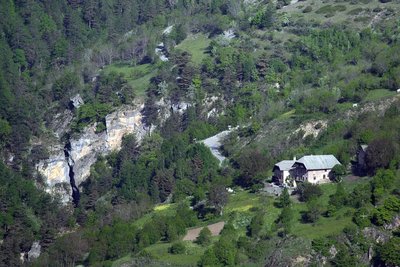
Les hameaux de l'Argentière - Jean-Philippe Telmon - Parc national des Écrins  Vernacular heritage
Vernacular heritageThe hamlets of L'Argentière
Before it was attached to the municipality of La-Bessée during the revolutionary period, L'Argentière covered this well-exposed slope, with all its hamlets from the church to Eychaillon. It was only in the second half of the nineteenth century, when the Durance was dammed and industries sprang up here, that the modern town of L'Argentière developed in the plain between the two old localities. The path takes you on a discovery of the old hamlets and their very attractive houses.
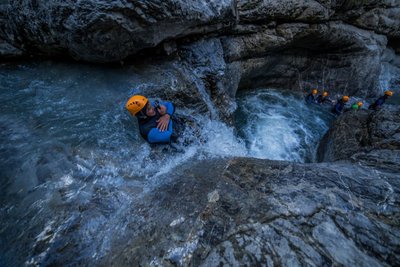
Canyoning - Fournel - Jan Novak Photography  Water
WaterThe Fournel
The Fournel mountain stream gives generously. Its water makes up a large proportion of the town's drinking water, supplies the irrigation canals, is used for hydropower and offers a recreational area valuable to the local economy in the form of its canyon, located in the gorge connecting it to the Durance. Being a mountain stream, it is impetuous, but sills have been built lower down and it has been dammed to prevent natural disasters. Numerous mountain streams have received the same treatment…

L'angélique sylvestre - Bernard Nicollet - Parc national des Écrins  Flora
FloraThe wild angelica
On the edges of seepage areas, the wild angelica grows. This is a tall umbellifer (the Apiaceae family) with blush white flowers and a hollow purplish stem. It is a cousin of garden angelica which grows in Northern Europe and is cultivated for its medicinal and culinary properties. The stem, the petiole (the «tail») and the leaf sheath can be candied.
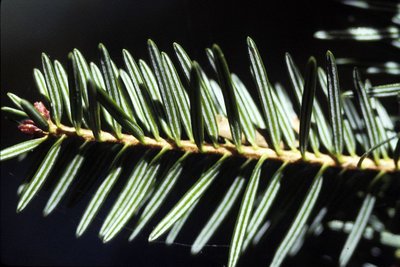
Aiguilles de sapin blanc - Parc national des Écrins  Flora
FloraThe silver fir
A few coniferous trees, including the fir, are mixed in among the deciduous trees. The fir thrives on this north-exposed slope, called the ubac, because it cannot tolerate drought. Its flat needles are arranged on either side of the boughs rather than all the way around them, which distinguishes it from the spruce. They have two white stripes on their undersides. Its elongated cones stand upright, rather than hanging downwards.
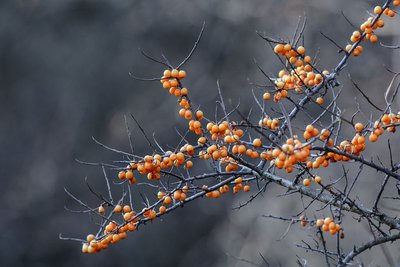
Baies d'argousier - Mireille Coulon - Parc national des Écrins  Flora
FloraThe sea-buckthorn
Here and there, you come across a bush with narrow leaves which are green on their upper sides and silvery-grey underneath. Take care, the branches are spiky! In autumn, it produces acidic bright orange berries. They are very rich in vitamin C and are best as a syrup or marmalade. It is a pioneer species which colonises alluvial soils in sunny situations. It has also been used by the Mountain Terrain Restoration service to stabilise slopes prone to water runoff.
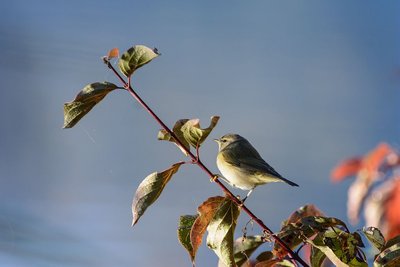
Le pouillot véloce - Mireille Coulon - Parc national des Écrins  Fauna
FaunaThe common chiffchaff
When spring arrives, a relentless «cheep, cheep» echoes around the forest. The singer is a small bird with a greenish grey and yellowish-white back, the common chiffchaff. Like other inconspicuous birds, the male has every incentive to make himself heard if he wants to attract the attention of a female! They are migratory and live almost anywhere where there are trees and bushes.
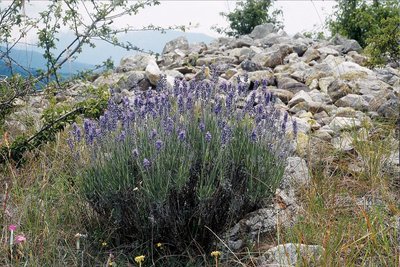
La lavande à feuilles étroites - Bernard Nicollet - Parc national des Écrins  Flora
FloraThe lavender
As you drop back downhill, you are once again in dry, hot meadows. The narrow-leaved lavender is established here, a reminder that the Pays de Écrins is in the Southern Alps after all! Not to be confused with the lavandin, this plant naturally grows on the rocky slopes of the mountains of the Midi.
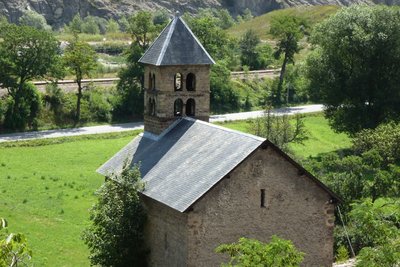
La chapelle Saint-Jean - Office de tourisme Pays des Écrins  Vernacular heritage
Vernacular heritageThe chapel of Saint-Jean
Built in the twelfth century and listed as a Historical Monument, the chapel of Saint-Jean is of Romanesque style. Tombs cut into the rock were discovered in recent archaeological excavations.
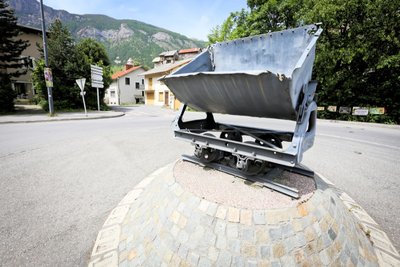
Un wagonnet - Jan Novak Photography  History
HistoryThe Mines de Fournel rail-cars
Filled with materials excavated from the mine face, the rail-cars were pushed along the rails by the miners.
They were called “mine dogs”. They were originally made from wood and over time iron pieces were added. They were made entirely from metal by the end of the nineteenth century.
Source

Report a problem or an error
If you have found an error on this page or if you have noticed any problems during your hike, please report them to us here:

